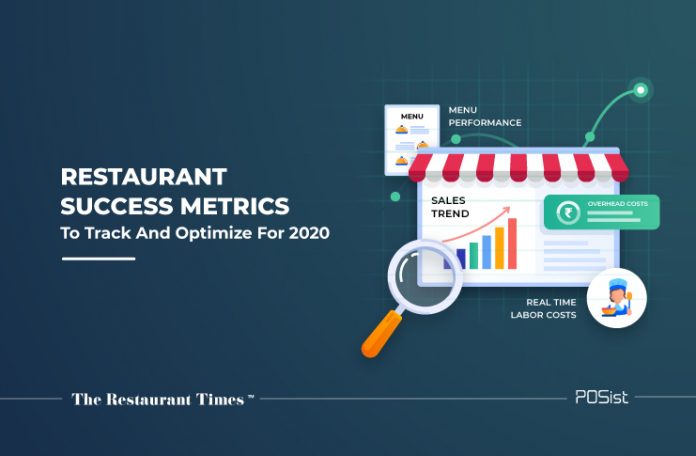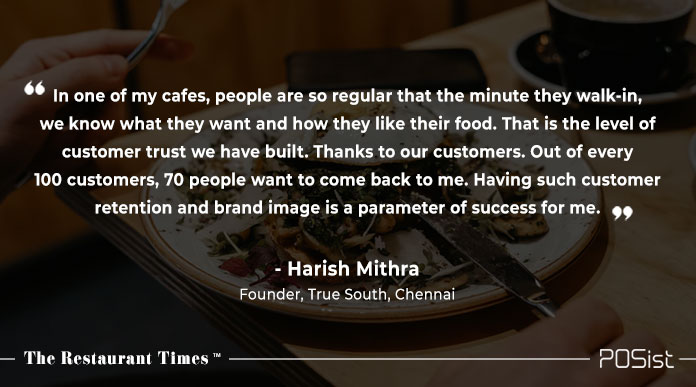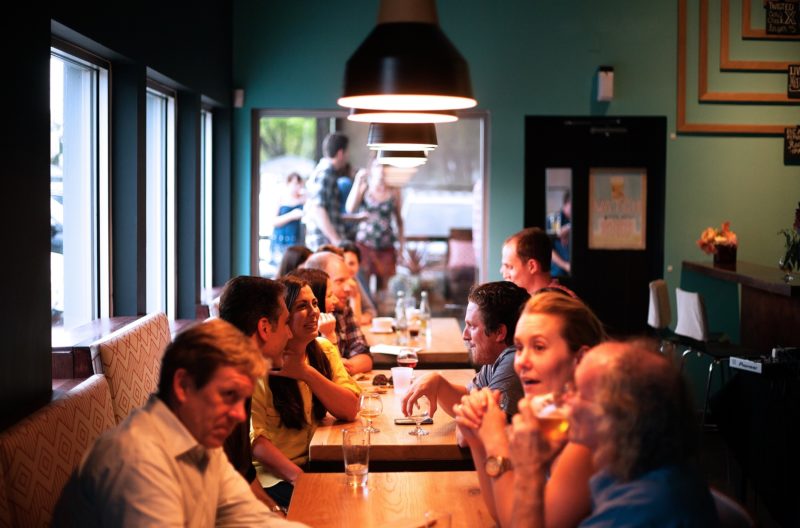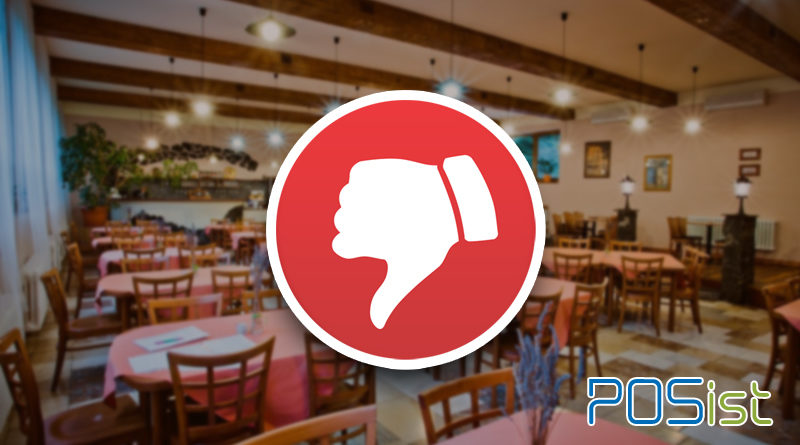Among the ever-growing competition, running a restaurant is undoubtedly tough. According to research published by Ohio State University, around 60% standalone restaurants and about 57% of franchise outlets fail to sustain after their first year of establishment. The primary reason behind the failure is an improper resource and revenue management. Many times, even if a restaurant is making profits, it might not be called successful because competitors are doing even better around. Therefore, having proper restaurant success metrics become crucial.
While speaking to a few restaurateurs and asking them about their success metrics, we understood that different people have different ways to measure their success. One restaurateur would prefer to take his customer retention rate as a success factor, while another could consider the net profits in a month as his metric for measuring success. We have, therefore made you a list of all the factors that you need to track and optimize on a daily basis to analyze your restaurant success.
Factors To Track And Optimize As Your Restaurant Success Metrics
Since the efficiency game is different for each restaurateur, it is essential for you to identify which element you want to put first as your metric. On the whole, the most important factors to be looked at are labour costs, food costs and inventory. Other factors that are talked about below revolve around these three broad metrics.
Let’s dig in to understand each of these metrics in detail.
i) Overhead Costs
These costs include the money it takes to keep your restaurant functioning on any single day. You can calculate these by dividing the total fixed costs of your restaurant in a month by the number of days your restaurant is open.
So, here’s a mathematical representation of the same.
Overhead costs = Fixed costs in a month/ number of days your restaurant is open in a month
Overhead costs are calculated using your previous bills and sales data. A lot of restaurateurs use this metric to determine their future operational processes. Using actual data would also show you how your day-to-day operations impact your overall business growth.
ii) Food Costs
Next on the list of your restaurant success metrics, we have a restaurant’s food costs. Your restaurant’s food cost is the amount you spend on food per month, taking account of your inventory purchases in the entire month.
Mathematically representing,
Food Costs = Total Purchases + (Total Leftover Inventory from the previous month – total Ending inventory)
Managing your inventory is a big part of maintaining your food costs. An inventory management system minimizes the wastage of perishable inventory by calculating the shelf life of the items and also the number of days until which the stock will last. It curbs food costs by standardizing the recipe on a central level.
“The base kitchen module helps us in understanding the variance in the products. There is detailed recipe for every dish while helps us in cutting down the overall food costs. Even if there is a discrepancy of 5% in the food costs, it can be tracked with the help of Posist,” says Akshay Balwani, Director- Sbarro
iii) Real-time Labour Costs
These costs are calculated by multiplying your total labour cost with the employee hourly rate with the number of hours a typical employee works for.
Mathematically representing,
Labour Cost = Total labour cost * Employee hourly rate * Number of hours worked.
The following metrics will help you analyze your labour costs better.
- Average labour cost per head
- Average complaints per order type
- Average claims per head
iv) Sales Trends
As a restaurant owner, sales trends are always your first lookout and on top of your restaurant success metrics. All your restaurant operations, campaigns that you run, and your brand growth are directly impacted by your sales. While analyzing your sales trends, you must look at the following metrics.
-
Break-even point:
Put, break-even point for any business is when your revenue is in equilibrium with your expenses and operating costs.
Mathematically representing,
Break Even Point = Total fixed costs / [(Total sales -Total Variable costs) / Total sales]
Ideally, you should be calculating your break-even point before you open your restaurant business, to accurately measure your expenses.
-
Profit and Loss:
You can calculate your gross profit using the following equation:
Total Sales – Cost of Goods Sold = Gross Profit
Other metrics for measuring your restaurant sales:
- Total sales per head
- Total sales per server per month
- Gross profit on sales
v) Menu Performance Analysis
Understanding which menu items work and which don’t should be your first goal while finalizing on your menu. Using your customer data, the most frequently ordered menu item at different times of the day, gives you a clear idea of your restaurant success.
“We want to understand what the customers want, through our integrated customer data and try to deliver it to them,” mentions Mithra.
The following metrics would help you to understand your menu performance better:
- Number of items requested not on the menu
- Bestseller dish according to different seasons
Pro tip: You could have a seasonal menu if that’s what is required looking at your sales. Use ingredients that are low cost for that particular season and serve dishes accordingly.
vi) New VS Repeat Customers Breakdown
According to the Food Services Report from NRAI, repeat customers contribute to 71% of sales at Quick Service Restaurants (QSR), 68% at fast-casual, 64% at casual dining, 63% at casual dining and 51% at fine dining. Looking at the contribution from your repeat customers, measuring your customer retention should undoubtedly be on your list of restaurant success metrics.
The following metrics need to be tracked and optimized to efficiently calculate your customer retention rate:
- % of known repeat customers
- % of customer satisfaction
- Cancelled Reservations
vii) Server Performance Metrics
Everyone from your restaurant manager to your waiter creates an impression of your brand in the eyes of your diners. Your staff has the potential to control the vibe of your restaurant. Monitoring their performance, and day to day operations is thereby crucial. Now, since it’s almost impossible to keep track of each of their activities manually, it is essential that you integrate your restaurant POS to measure your server’s performances.
The following metrics will help you analyze your staff performance right away:
- Training hours for staff
- Table turnover rate
- Average wait time for customers
- Time to prepare tables between seating
- Number of absent days for each employee
The most important out of these is the calculation of your employee turnover rate. Here’s how you calculate it!
(Starting number of employees + Ending number of Employees)/ 2= Average number of employees
Lost employees/ Average number of employees = Employee turnover
viii) Feedback Metrics
Many restaurateurs believe that having a continuous loop of feedback helps them grow their brand like no other. Unlike the typical feedback form that is common to all your diners, you could have a personalized feedback form for your customers. This will make your feedback more direct and would help you to know where precisely the lag is if any.
While assuring that these metrics are calculated now and then, a restaurant POS automate the process for you will accelerate your restaurant growth. It should be noted that without an integration of all these restaurant success metrics on one platform, it is difficult for to correctly analyse your business growth. Having multiple comprehensive reports on sales trend, your menu, net profit and loss, and so on will only help to reduce the time you took earlier to determine your growth. We hope that keeping track of these metrics will help you reach your desired targets!


















